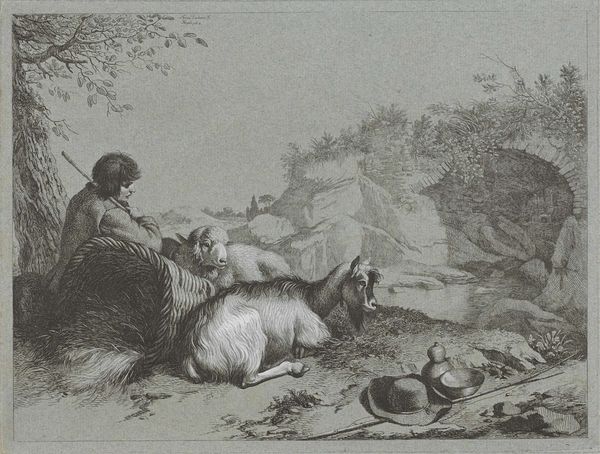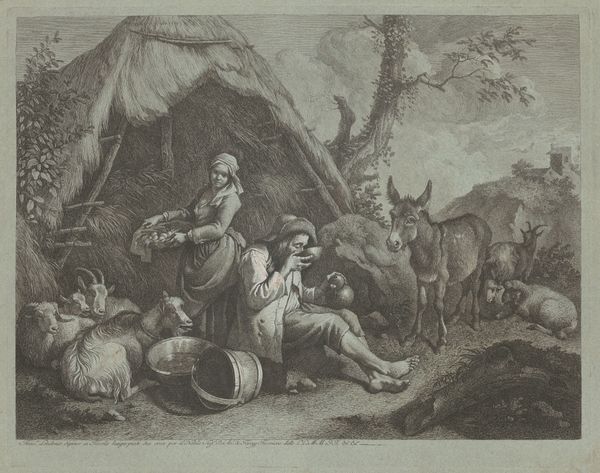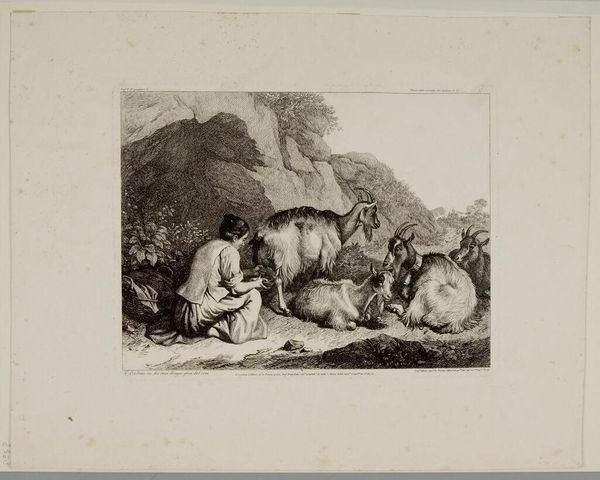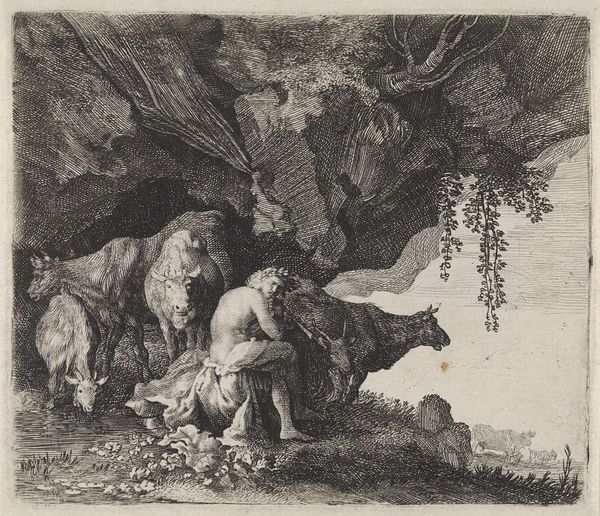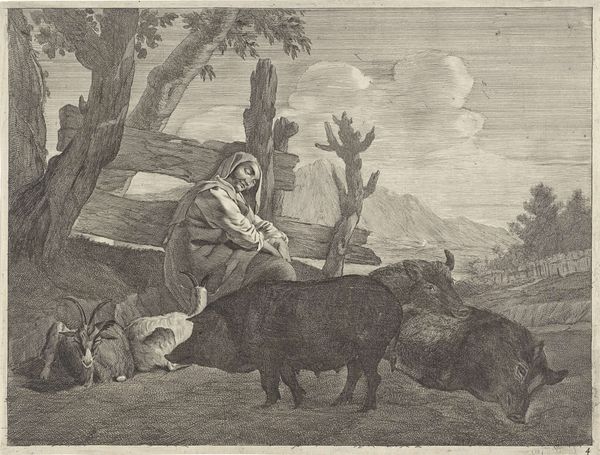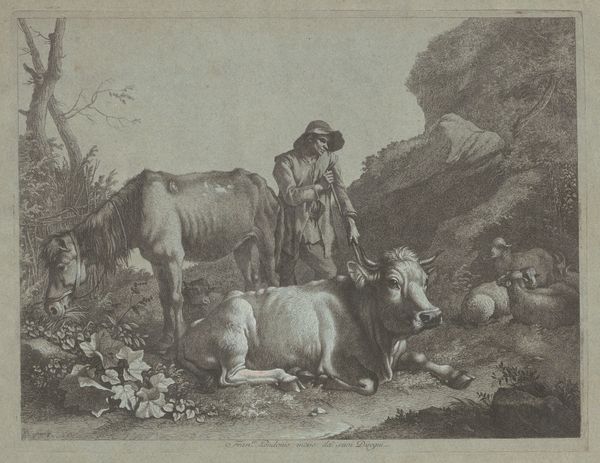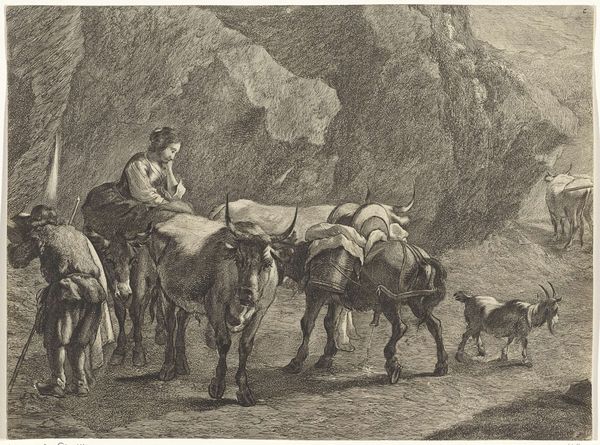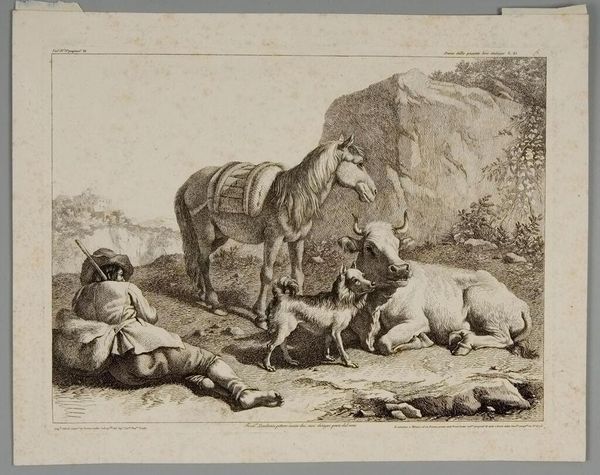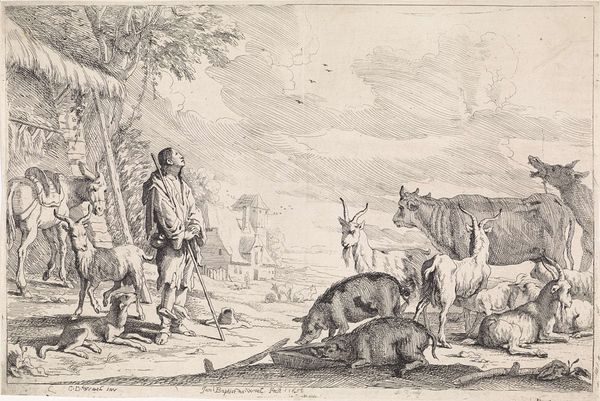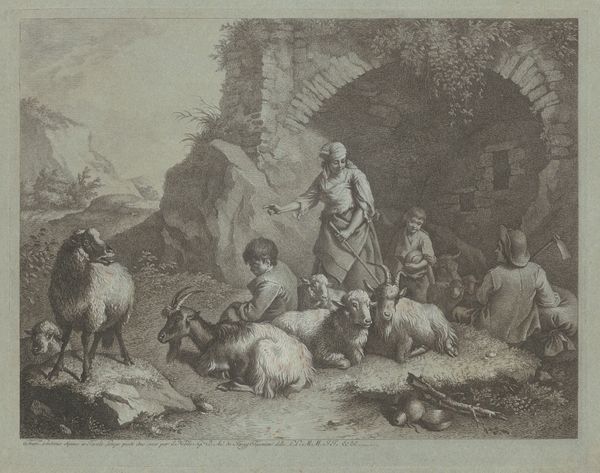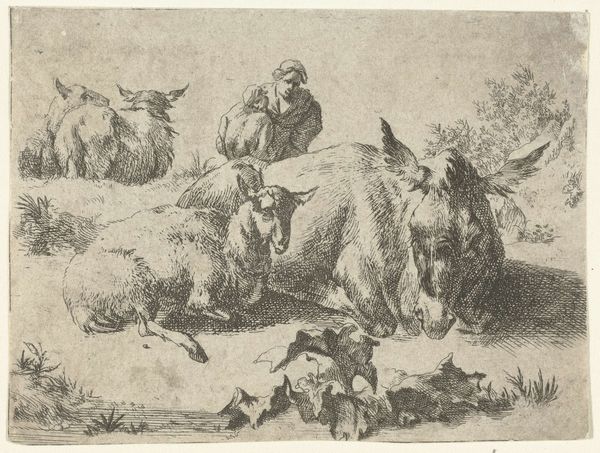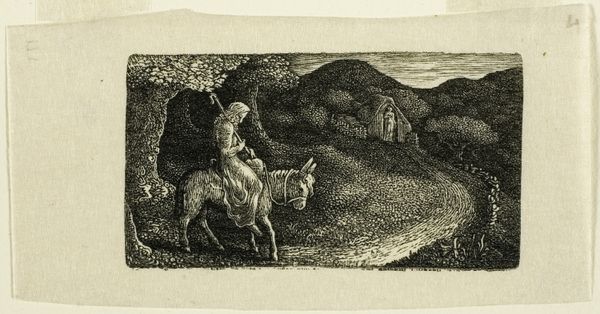
Dimensions: height 218 mm, width 290 mm
Copyright: Rijks Museum: Open Domain
Editor: Here we have Francesco Londonio's "Herderin met kudde geiten" or "Herdsmaid with a Goat Herd," created between 1763 and 1764. It appears to be a pencil drawing, and I’m immediately struck by the delicate balance between the figures and the natural landscape. What stands out to you about the composition of this drawing? Curator: Immediately, my attention is drawn to the rendering of depth through varied linework. Notice how the artist uses tighter, darker lines in the foreground to define the herdsmaid and goats, creating a sense of intimacy, while the background foliage is suggested with looser, fainter strokes. What does this contrast in line quality suggest about the artist’s intentions? Editor: Perhaps it guides the viewer’s eye, emphasizing the relationship between the woman and the animals as the central theme, while the environment, though present, remains secondary? Curator: Precisely. Moreover, consider the positioning of the figures. The triangular arrangement of the goats, echoed in the form of the rocky outcrop behind, lends the scene a certain structural stability, a visual harmony. How might this geometric framework contribute to the overall feeling evoked by the work? Editor: I see what you mean. The triangle almost cradles the scene, creating a sense of peace, rather than the wildness you might expect from a landscape. The formal structure brings a level of serenity. I suppose I was focusing too much on the apparent subject matter! Curator: Indeed. Paying attention to formal devices, to line, composition, and spatial organization, can unlock deeper readings and provide insight into artistic intention, irrespective of subject. What new perspectives will you carry with you? Editor: I think I'll try to look beyond the subject, considering the intentionality of the artist's marks in creating meaning and mood. Thanks for pointing that out.
Comments
No comments
Be the first to comment and join the conversation on the ultimate creative platform.
